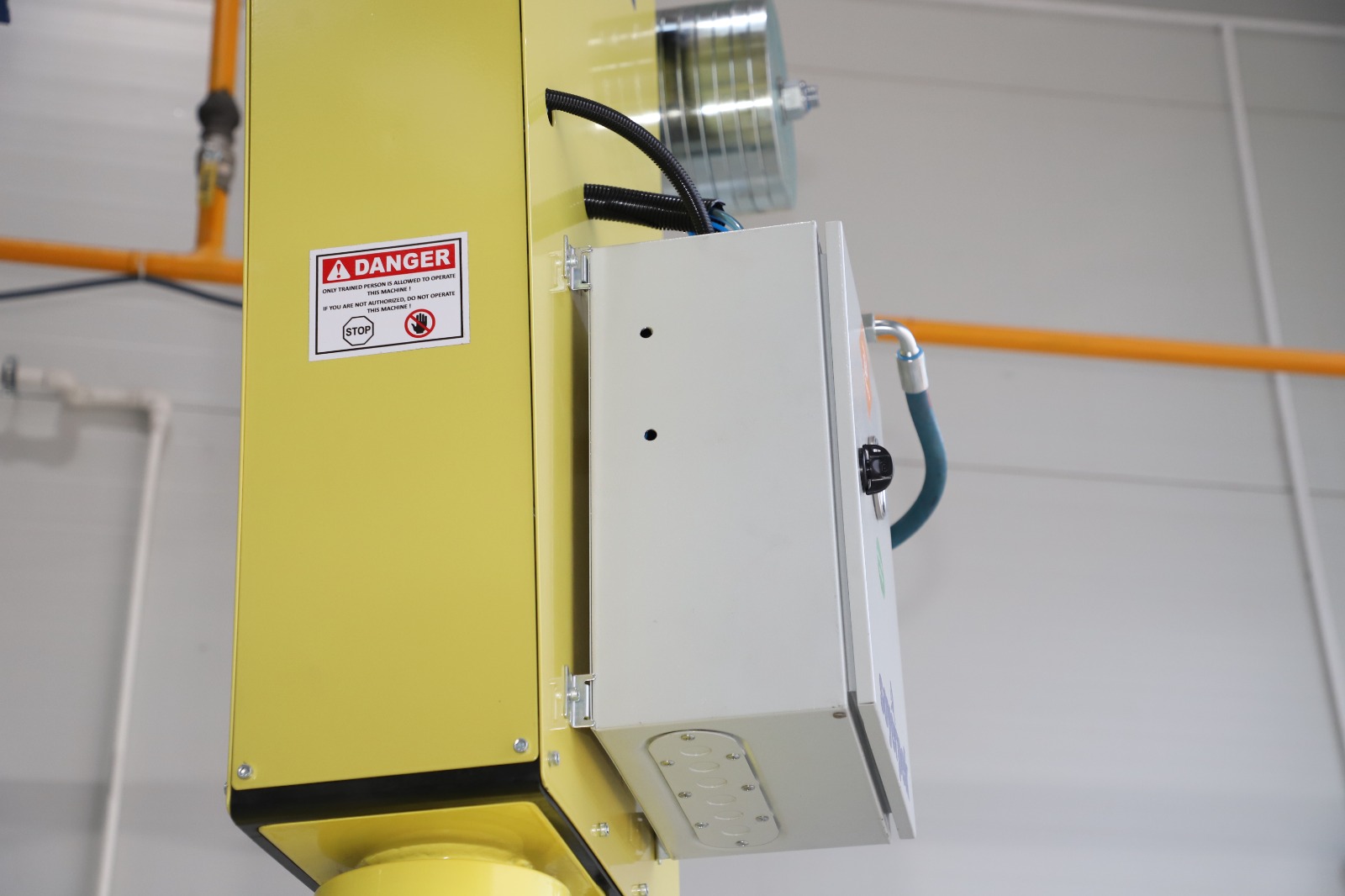Industrial Manipulator: What Is It, Where Is It Used, How Does It Work?
What is a Manipulator? Definition and Meaning
What is a manipulator? A manipulator is an industrial automation device used to ergonomically and safely handle heavy loads in production processes. The term "manipulator" comes from the Latin "manus" (hand) and means "to operate or control by hand."
What is an Industrial Manipulator?
Industrial manipulators are robotic devices that enable the handling of objects of various forms and materials on production and assembly lines in factories. This handling process is usually managed by an operator. The manipulator allows the workpiece being moved to be positioned at the desired position and angle under the operator's guidance.
What Does Manipulator Mean?
The word "manipulator" derives from Latin "manus" (hand) and "plere" (to fill), meaning "manual operation and guidance." In an industrial context, it refers to mechanical systems that mimic the functions of the human hand.
What is a Manipulator Used For? Applications and Benefits
What is a manipulator used for? Manipulators are devices that perform handling in many processes, from very light parts weighing grams up to serious weights like 1000kg. They protect worker health, increase production efficiency, and provide precise positioning.
Where Are Manipulators Used?
-
Automotive Sector: On assembly lines, all assembled parts such as the front and rear windows, doors, bumpers, front suspension groups, seats, engine group, transmission, and wheels are positioned on the vehicle with manipulators. In sub-assembly lines, equipment like brake discs and drums are elements handled by manipulators.
-
Machining Sector: Processes such as taking raw, semi-finished, and finished workpieces from a pallet and fixing them to machines, and positioning them on fixtures or dividers by turning them at different angles and axes are also carried out with manipulators.
-
Sheet Metal Processing Sector: Loading sheets onto laser cutting and punch machines; positioning, flipping, and rotating sheets at various angles on press brakes and presses; and supporting the sheet during press brake bending are done by manipulators.
-
Foundry Sector: Manipulators are used for lifting cores, handling hot parts coming out of casting, stacking them, and loading them onto machines.
-
Packaging and Logistics: The handling and turning of paper, plastic film, yarn, and fabric coils; taking cable reels from winding machines and stacking them on pallets are also performed by manipulators.
-
Electronics and Food Sector: Manipulators are used for the contact-free handling of batteries in the electronics sector and for handling flour and sugar sacks in the food sector.
How Do Manipulators Work? Working Principle
How do manipulators work? Manipulators grip the material rigidly and apply an upward force exactly equal to the material's own weight. This way, it nullifies the weight of the material, and the operator can carry and precisely position the material as if in a zero-gravity space.
What is Zero-Weight Technology?
Soyerpek's developed "zero-weight" technology enables manipulators to:
- Balance and nullify the material's weight
- Allow operator control with gram-level forces
- Work with physical guidance without button controls
- Provide precise positioning capability
Example: A 100kg paper roll is handled as if it were a zero-weight part, lifted by the operator's hand, and can be delicately threaded onto the winding machine's shaft.
How Much Do Manipulators Cost?
Manipulator prices vary based on lifting capacity (50kg-300kg range), technology type (pneumatic, electric, servo motor), working area, and custom design requirements. Soyerpek offers custom price quotes for your business needs.
What Are the Types of Manipulators?
Manipulator types produced by Soyerpek:
- Pneumatic Manipulator: Works with compressed air, economical and reliable
- Electric Manipulator: Precise control with electric motor
- Servo Motor Manipulator: Highest precision and performance
- Rope Manipulator: For applications with constant center of gravity
- Vacuum Manipulator: Ideal for flat surfaces
- Magnetic Manipulator: For ferromagnetic materials
At Soyerpek, we offer ergonomic and efficient manipulator solutions tailored to your production process. Contact us to find out how we can improve your process.

